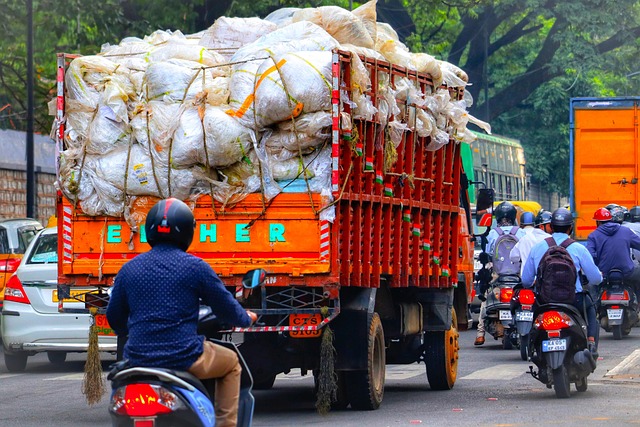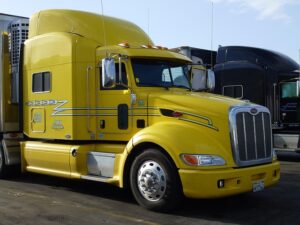Register Car in California: Step-by-Step Guide with VIN Verifier
Looking to register your car in California? This comprehensive guide walks you through the entire process, from understanding the requirements to securing your license plate. To begin, gather essentia…….

Looking to register your car in California? This comprehensive guide walks you through the entire process, from understanding the requirements to securing your license plate. To begin, gather essential documents like proof of ownership and insurance. Visit a local California DMV office or use our recommended dmv vin verifier tool for a seamless experience. After verifying your vehicle’s VIN (unique identifier) and completing necessary inspections, pay the registration fees and hit the road legally!
- Understand Requirements for Car Registration in California
- Gather Necessary Documents for Car Registration
- Visit California DMV to Register Your Vehicle
- Verify VIN and Complete Inspection Process
- Pay Registration Fees and Receive Your License Plate
Understand Requirements for Car Registration in California

Before diving into the registration process, it’s crucial to understand the requirements for car registration in California. The California Department of Motor Vehicles (DMV) mandates several key steps and documents to ensure vehicle safety and legality on state roads. One essential component is a valid Vehicle Identification Number (VIN) inspection or verification. This can be done through a traditional static VIN verifier at a DMV office or, increasingly popular, with a mobile VIN verifier service that offers convenience for busy individuals.
A crucial aspect to remember is that the vehicle must meet all safety and emissions standards set by the state. This includes a thorough inspection of critical components like brakes, lights, tires, and exhaust systems during the registration process. Additionally, proof of insurance is mandatory, ensuring drivers have adequate coverage before hitting the highways. For those opting for a mobile VIN verification or vin inspection service, this process can be completed conveniently at your location, saving time and potentially streamlining the overall car registration experience in California.
Gather Necessary Documents for Car Registration

Before heading to the DMV for car registration, ensure you have all the essential documents prepared. The process typically requires a significant amount of paperwork, so being organized will save time and potential headaches. Collect your vehicle’s registration certificate from a previous state (if applicable), proof of insurance, and a valid driver’s license. For out-of-state transfers, additional documentation such as a title transfer or a power of attorney might be necessary.
One crucial document to have on hand is the Vehicle Identification Number (VIN) verifier. Many DMV locations now offer mobile VIN inspection services, allowing you to verify your vehicle’s history and ensure all records are in order before registration. This step is essential for ensuring your car’s authenticity and avoiding any potential issues during the registration process.
Visit California DMV to Register Your Vehicle

To register your vehicle in California, one of the essential steps is visiting a California Department of Motor Vehicles (DMV) office. The DMV serves as the primary authority for ensuring that all vehicles on California roads are properly registered and inspected. Upon arrival, you’ll need to gather necessary documents, including proof of ownership, identification, and current insurance. A DMV representative will guide you through the registration process, which involves verifying your vehicle’s unique Identification of Vehicle (VIN) number.
The VIN is a crucial piece of information that can be checked using a DMV-approved VIN verifier, ensuring the vehicle’s authenticity and history. Many California DMV locations offer on-site mobile VIN verification services, allowing for added convenience. Alternatively, you can opt for a mobile vin verifier to complete this step remotely, making the registration process more accessible, especially if you have other commitments or reside in remote areas.
Verify VIN and Complete Inspection Process

Before initiating the registration process, it’s crucial to verify your vehicle’s unique identifier—the Vehicle Identification Number (VIN). This 17-character code is essential for accurate record-keeping and ensures the authenticity of your car. A reliable method to confirm the VIN is by using a DMV vin verifier or a mobile vin verification service, which cross-references the provided number with official databases. By utilizing these tools, you can ensure that your VIN is valid and matches the vehicle’s specifications.
Parallelly, preparing for a comprehensive inspection is vital. In California, this involves assessing various aspects of your car’s condition, from mechanical systems to safety features. A mobile vin inspector or even a standard inspection at a certified center can facilitate this process. They will check crucial elements like lights, brakes, tires, and emissions control, ensuring your vehicle meets the state’s safety standards. Completing these steps guarantees that you have accurate data for car registration, making the entire procedure smoother and more efficient.
Pay Registration Fees and Receive Your License Plate

After completing your vehicle’s registration application at the DMV or online, the next step is to pay the required fees. These fees vary based on the type of vehicle and its age, so make sure to check the official California DMV website for accurate information. Once your payment is processed, you’ll be issued a unique Vehicle Identification Number (VIN) verifier code. This code is crucial for license plate issuance.
With your VIN verifier code in hand, you can now receive your license plates. In many cases, residents prefer to have their plates delivered by mail. Alternatively, you may opt for a quicker pick-up at the DMV office. If using a mobile vin verifier or undergoing a mobile vin inspection, ensure that your vehicle’s information aligns with the details provided by the verifier, as this streamlines the plate issuance process and potentially saves you time.
Registering a car in California involves several straightforward steps, from understanding the requirements to visiting the DMV. Ensure you have all necessary documents, including proof of ownership and identification. Use a trusted DMV VIN verifier to check your vehicle’s history and complete any inspections required. Once verified, pay the registration fees and receive your license plate, legally registering your car in California.







